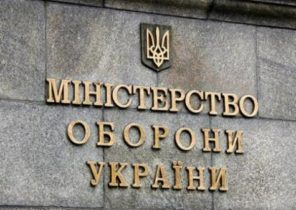Pandemic coronavirus had a negative impact on the economies of many countries, particularly those heavily dependent on oil. Russia was also forced to respond to the global challenge the oil sector, oil accounts for a third of exports and 40% of the revenues of this country. At the same time this sector is influenced by the internal problems associated with existing oil reserves and unconventional fields, where there are problems with the extraction and processing of energy.
For Moscow this issue is not new. Rather, it remained for decades, but in the current times of crisis her burden was even heavier, and it is difficult to find ways to break the deadlock. What problems are threatening the Russian oil sector? Can we now talk about the seriousness of the situation?
Successes and failures in the history of Russian oil
Since the last century, the Russian energy sector has experienced a number of UPS and downs. So, in 1987 in the Soviet Union, peak oil production, which reached 11.4 million barrels per day. After the collapse of the Soviet Union, the reign of chaos in the economy and the fall in world oil prices, this figure dropped to 6 million barrels per day.
In such circumstances, Russia’s largest company in the industry, such as LUKOIL and TNK-BP, had little incentive to active development of oil fields in the country. Most of the existing fields in Western Siberia were discovered before 1970.
At the beginning of the new Millennium production on the oil fields in Western Siberia revived the Russian economy, and the growing demand on the world market contributed to the increase in the production of cheap Russian oil. Russia competes with Saudi Arabia for the status of the world’s largest exporter of oil, turning a blind eye to the difference in the volume of oil reserves of the two countries.
After 15 years of production at these fields the volume of oil in some of them has not changed, and in others decreased, that talked about the possibility of reducing production by 2030. This caused concern, and Russia had to acknowledge the new reality — the era of glory, domination and big profits in the oil market could come to an end.
Five problems faced by the Russian oil sector
1.The depletion of easily recoverable resources
Against the background of depletion of easily extracted oil resources in the fields of Western Siberia, the country is forced to pay attention to other pools with a higher cost of production and a high degree of impurities in the oil processing which requires certain techniques. The proven reserves of Russian oil amount to 15 billion tons, but according to forecasts, by 2040, they will be reduced to 350 million tons.
2. The low efficiency of Russian refineries
Although the Russian oil refining sector ranks third in the world after the United States and China, a network of local refineries has the capacity and technology necessary for the production of high quality end products. Russia produces a large proportion of oil, more saturated with carbon, the production of which has tripled since 2000, due to the fact that the government imposed less tax on heavy oil and crude oil to support the demand for products of lower quality.
However, with changing global demand, which focuses on less carbon-rich petroleum products, the ability of us refineries to produce high-quality and European countries closing their plants, Russian oil faced strong competition in the oil market.
3. American and European sanctions
International sanctions that prevent the sale of Russian modern equipment and technologies for oil production, has enabled the country to ease the pressure on traditional deposits and the shift to prey in the sea, and shale oil.
Sanctions imposed by the United States and the European Union also has not allowed foreign investors to invest in the Russian oil sector, which needed large volumes of investment to new exploration.
4. The monopoly of the major producers in the oil market
Monopoly on the oil market received a license 95.7% of proven oil reserves and 88% of its potential reserves, while the industry needs small manufacturers, competition between them will improve and develop new methods of extraction and refining.
For example, the shale revolution in the United States was due to those manufacturers, who for years worked on the development of the oil extraction process. Unlike Russia, the American government gave them the freedom to experiment.
5. Ownership rights threaten small producers
Institutional arrangements regarding ownership of resources in Russia mean that they all belong to the state. This is an obstacle for small companies seeking to produce or to invest in the production of unconventional oil, because there is no guarantee that they will be able to rent the land it is discovered. This is a significant obstacle to the development of the Russian oil sector.
The reduction of income depletes. The Russian economy is facing a crisis
Coronavirus pandemic has exacerbated the challenges faced by heavily oil-dependent Russian economy. According to preliminary estimates, the country’s income from oil and gas decreased by approximately $ 165 billion, forcing the government to use international reserves for financing the state budget.
As stated by former Finance Minister Alexei Kudrin, the number of unemployed in Russia could triple this year and reach 8 million people. While the Central Bank predicts decline in GDP of 15%, if oil prices fall below $ 10 dollars.
It is true that in the beginning of the year Russian President Vladimir Putin announced plans to stimulate economic growth, which is in recession for six years, and to raise the standard of living of citizens.
However, what happened after this crisis has resulted in serious internal problems that threaten the stability of society.
Darya Kamenskaya, who owns a repair shop for cars, expressed his outrage to Reuters about the current economic conditions, forcing her to pay holiday of its employees from its own funds. She said the Agency: “thus began the revolution in the past — with the working class.”
Other Russian citizens also Express dissatisfaction with the situation, Recalling that the Russian people are patient, and the Western model is not suitable, but if it rises, then the overthrown thrones and empires crumble.
In this regard, it should be noted that the level of support for Putin has decreased by 63% after the crisis, and this is a record low since 2013.
Operation worse than the disease: a long-term solution
Putin’s fourth presidential term that ends in 2024, understands the scale of challenges facing the development of the oil sector — the main source of income in the country — to break the current impasse. However, it is too early to judge, what choice do Russian leader: decides if he can avoid any serious and painful steps to the end of his term or make a bet on a long-term investment with all the attendant difficulties.
Problems affecting the Russian economy can be solved as follows.
1.Investments in deposits of unconventional oil
Russia has huge reserves of unconventional oil in Eastern Siberia and its territory in the Arctic. In addition, she has a huge shale oil reserves — more than anywhere else.
In Western Siberia there are the so-called Bazhenov formation, oil reserves which amount to 140 billion tons. That’s more than the Bakken shale in North America, where oil reserves estimated at 70 billion tons. Regarding reserves of bitumen, they are estimated at 35 billion tons, in addition to the 29 billion tons of natural resources, located in remote areas of Eastern Siberia.
These resources represent an enormous potential for the country, by which it is possible to avoid the crisis after the depletion of oil in the traditional pools. However, they are at great depth (thousands of meters below the surface of the earth), and they cannot be accessed by traditional mining methods. This requires huge amounts of water and natural gas.
Some oil companies such as Tatneft, worked on the extraction of bitumen using methods similar to those that were invented in Alberta (Canada) to extract bitumen from a depth of 300 meters, but all of these efforts and the invested capital — only a drop in the sea. The industry needs more injections.
In March, the Kremlin announced plans for the development of the North in the framework of the decree “On state policy of the Russian Federation in the Arctic for the period up to 2035.”
In accordance with this strategy it is necessary not less than 40 vessels, the modernisation of four airports and the construction of additional Railways and sea ports. The Russian government is encouraging energy companies to invest in the region through tax exemption, but this was before the pandemic coronavirus. Now, of course, the situation has changed and the industry needs higher and more stable oil prices to cover all production costs.
2. Retain its position in the Asian oil market
Europe imports 30% of its oil and 40% natural gas from Russia and in Russian-European relations have maintained relative peace and stability. At the same time, the desire of Europeans to buy more clean and environmentally safe oil puts Russian product that does not have these characteristics, in a difficult position.
In this situation Russia has no other choice but to export more oil to the Asian market, namely China as the world’s largest importer of this energy source. Today Russia covers the 15% of Chinese imported oil, annually increasing this figure to 50%, which indicates that the prospects for cooperation between the two countries in this area.
Bilateral cooperation provides a favorable environment for the development of the economies of the countries, but the relationship between Moscow and Beijing is not devoid of tension, especially in regard to their competition over the Arctic and the conflict of interests in Central Asia. One way or another Russia needs to develop a formula for optimal interaction with China to help its oil sector.
3. Reforming the economy and reduce dependence on oil
Is the goal to which Russia has sought for decades, and over the last few years the work was going with minimal effort, as the country has relaxed control over small producers in order to stimulate investment — this approach is used by countries such as Norway, Australia and Canada. However, to achieve the same success Russian authorities need much greater effort because the population in these countries is small. This means that they need fewer sectors to diversify the economy, and hence investment is yielding a better result.
On the other hand, the Kremlin is spending a large portion of GDP on military spending, and support a large population and a strong army makes the dream of a weakening dependence on energy exports virtually impossible.
In light of these serious problems and painful decisions that Russia will have to take to rescue its oil industry and the economy as a whole, it remains only to wait, when the political leadership decides on a radical transformation. It may happen that the government will turn to history and build a so-called “Potemkin villages”. As you know, it was a sham settlement, where the facades of houses were painted to create the Empress Catherine II false impressions about the prosperity of the area, which actually was very poor.







